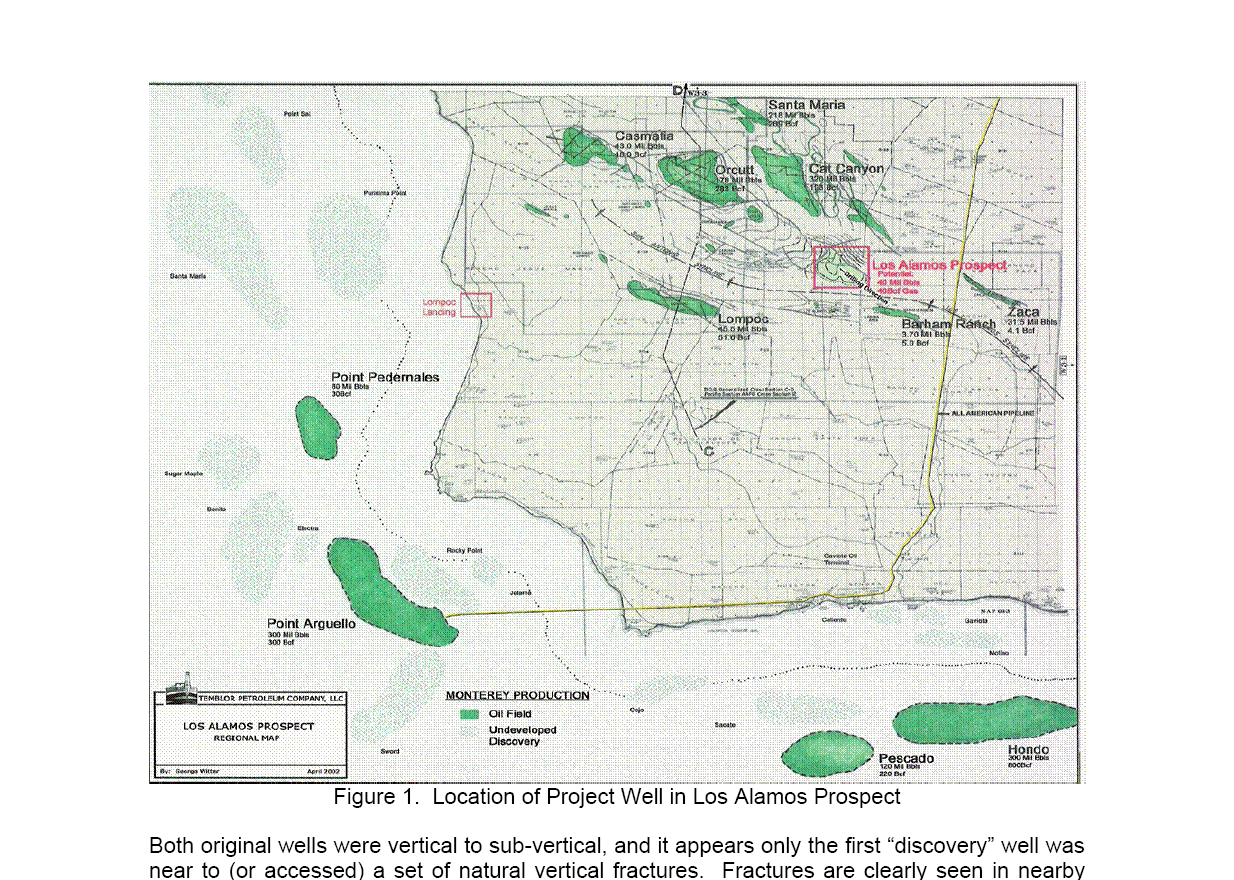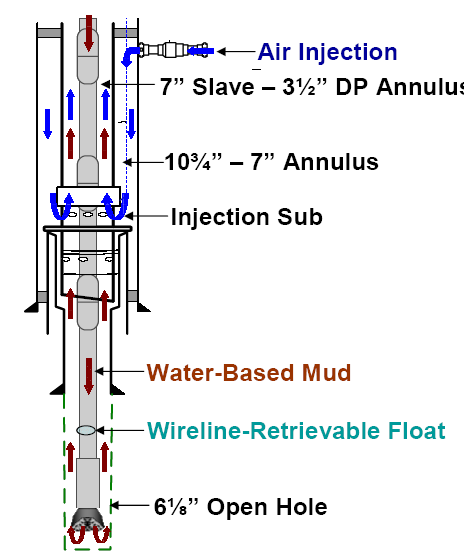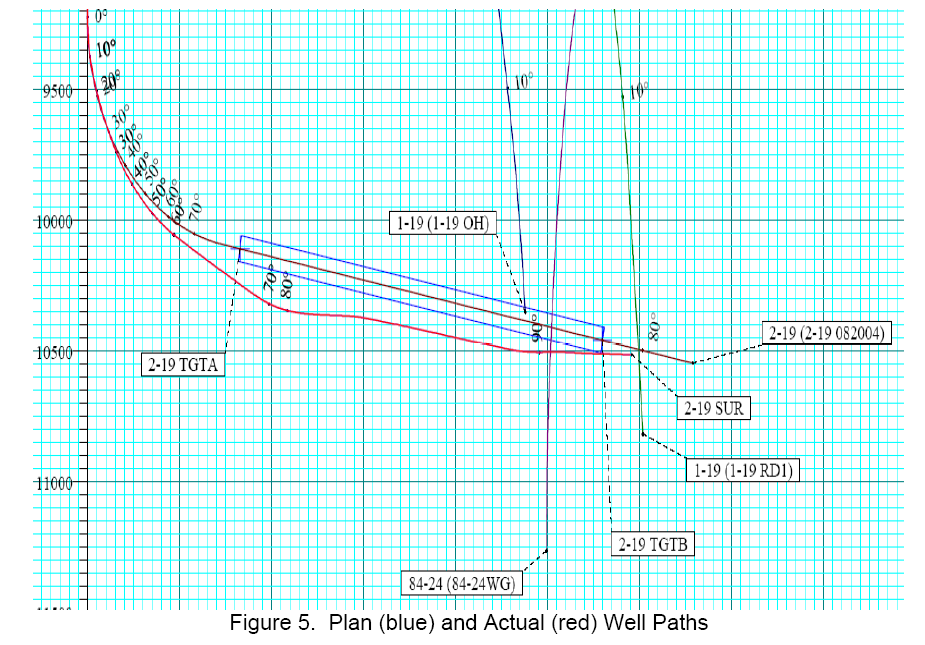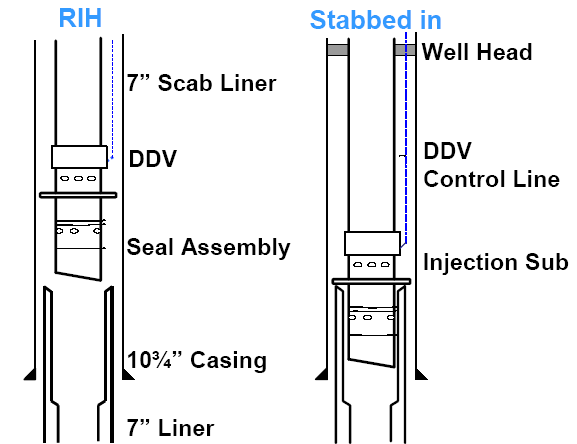Below 10,000’, a horizontal well drilled on-shore southern California, applies novel Managed Pressure Drilling technology to prove the potential of a basin wide resource. Over 2,200’ of fractured light oil shale is horizontally accessed using a concentric-string air injection system and a simple water-based drill-in fluid.
Bob Knoll, Maurer Technology Inc (Division of Noble Drilling)
- 1.1 Background
This well was drilled by California based Temblor Petroleum Company LLC, with support from the U. S. Department of Energy “Demonstration Well“ funding program. The project was undertaken to demonstrate that oil and gas can be explored, drilled and produced safely and economically from a deep fractured Monterey reservoir in the Santa Maria Basin of California by employing cutting-edge horizontal and MPD drilling methods. Two wells were previously drilled vertically in this area with heavy mud and completed conventionally. Neither well was commercially productive after fracture stimulation attempts, even though very strong shows of oil and gas were obtained while drilling, and free oil and gas were recovered from both wells during and after completion. Seismic and well data indicate a structural trap, a down-thrown fault block or graben, of some 1500 acres, providing a potential accumulation of 30 to 50 million barrels of 31 gravity oil, and 30 to 50 BCF of gas.
The new well (Castillo, Ross and Howe 2-19) was drilled on the location: SEC 19 T8N R32W, Santa Barbara County, California, in the fall of 2004 (Figure 1). The project’s objective was to horizontally access a minimum of 2100 ft of oil-bearing, high-resistivity Monterey shale. The Monterey is a fractured/micro-fractured Miocene reservoir that has produced most of the oil and gas in the Santa Maria Basin onshore region of south central California. The target reservoir is at a depth exceeding 10,000 ft true vertical depth (TVD). All commercial onshore production from the high-resistivity section of the Monterey has come from fields at much shallower depths – 5000 ft TVD or less.
The original discovery well, drilled by Oxy in 1986, penetrated and logged approximately 700 ft of a light oil column at 10,500 ft TVD. Temblor drilled a second delineation well in 1999 from a new surface location approximately 0.5 mile southeast of the discovery well surface location. This second well was directionally drilled (30° inclination) so that its bottom-hole location was only 400 ft laterally displaced from the discovery well within the Monterey target interval. The second well also logged approximately 700 ft of light oil column with no evidence of bottom water or top gas.Although the well flowed for a short period (10 BOPD for 1.5 hours), it would not sustain commercial flow rates after an acid stimulation treatment, and was suspended.
 Both original wells were vertical to sub-vertical, and it appears only the first “discovery” well was near to (or accessed) a set of natural vertical fractures. Fractures are clearly seen in nearby outcrops and are expected to trend NE–SW within the Monterey due to the local stress state.
Both original wells were vertical to sub-vertical, and it appears only the first “discovery” well was near to (or accessed) a set of natural vertical fractures. Fractures are clearly seen in nearby outcrops and are expected to trend NE–SW within the Monterey due to the local stress state.
 The new well employed many novel design attributes and MPD procedures to avoid this potentially damaging process, to mitigate unstable shale problems, to provide faster penetration rates (P-rate), and to allow for simple “Evaluation-While-Drilling” (EWD) observation of oil-filled fracture access. Successful exploitation of this structure by horizontally accessing vertical fractures in a non-damaging mode was expected to deliver production of ±600 BOPD.
The new well employed many novel design attributes and MPD procedures to avoid this potentially damaging process, to mitigate unstable shale problems, to provide faster penetration rates (P-rate), and to allow for simple “Evaluation-While-Drilling” (EWD) observation of oil-filled fracture access. Successful exploitation of this structure by horizontally accessing vertical fractures in a non-damaging mode was expected to deliver production of ±600 BOPD.
Novel Well Design Aspects and Results;
One novel attribute of the well related to the 10.75” surface casing / 7” concentric “slave” string design. The term “slave” refers to an extra concentric casing string suspended from the wellhead to provide a number of unique capabilities. In this application the slave string was stabbed into a 7” liner that had been run and cemented at the heal of the well @ 10,000’ TVD and 60° angle. The liner hanger was set at 3,300’ TVD just inside the surface casing shoe (Figure #2 below). The slave assembly included a ported sub directly above the liner stab-in assembly. This design provided a temporary annular flow path for air-lift injection, and an area for secure placement and control of a “Down-hole Deployment Valve- (DDV) set directly above the ported sub. The DVD, when function closed, would allow conventional tripping above the valve while maintaining the horizontal interval in a balanced/under-balanced bottom-hole-pressure (BHP) condition. Once drilling the entire horizontal productive interval in a controlled MPD mode, the slave/DVD assembly was retrieved and the 7” liner was conventionally tied back to the surface wellhead.
Figure #2, Slave String and DVD design and placement.
This novel approach, figure #3 below, provided capability for concentric string air-injection MPD without the requirement of special motors/MWD/LWD equipment or practices necessary when conducting MPD with conventional aerated fluids. The use of air also provided significant cost savings versus nitrogen.
 This MPD approached worked very well in drilling the horizontal section, particularly once optimum air injection rates were established. The reservoir pressure was expected to be in the 5000 PSI range. The targeted BHP range of around 4600 PSI were generated during drilling and verified by measurements from an annular pressure sub on the directional drilling assembly.
This MPD approached worked very well in drilling the horizontal section, particularly once optimum air injection rates were established. The reservoir pressure was expected to be in the 5000 PSI range. The targeted BHP range of around 4600 PSI were generated during drilling and verified by measurements from an annular pressure sub on the directional drilling assembly.
Improved P-rates were gained as a direct function of the reduced BHP while drilling horizontally in the shale. This effect is clearly seen in figure #4 below, comparing instantaneous drilling rate with air-injection rate and corresponding reduced BHP observations.
(FIGURE 4)
Fluid Selection;
A relatively costly oil based mud (OBM) was initially considered necessary in the intermediate vertical and upper curve-to-heal section to mitigate shale stability problems. The larger then normal intermediate hole size (9.825” versus the more standard 8.5” hole for 7” liner installation), allowed by the larger surface casing, provided an enlarged annular clearance for the 7” liner. This, in turn, allowed for use of a simple pre-weighted water-based fluid in the intermediate hole section. This approach was proved viable, from a shale stability perspective, since the Sisquoc shale in the intermediate hole section was exposed for more then 17 days prior to liner installation, and the 7” liner was run to bottom with little trouble after a reaming run of the intermediate and upper curved section.
The use of simple water base in both the curve and horizontal section also proved very valuable in terms of EWD. A seismic anomaly suggested a fault or fractured zone may exists at the top of the Monterey target. P-rate variation, mineralogy of cuttings, and strong Hydrocarbon shows all pointed to access of an oil-filled fractured zone at this point. The upper curve was terminated at this point and lined with 7” liner. The main 6.125” horizontal section was then placed and completed as an open hole, employing a short tangent section to get deeper into the high resistive interval of the shale, then a lower curve was built to a 90° angle and a horizontal section drilled to close proximity and beyond the discovery well bottom hole location.
A basic challenge of the well was stabilization of the deep Monterey Shale to protect the integrity of the hole and to allow cuttings to come to the surface in good enough condition to allow EWD. This implies a visual inspection of the drilled cuttings for micro-fracturing and oil within the fractures, and is calibrated with the mud-gas logging observations, drilling rate changes, etc. The target high resistivity shale is a gradation between chert, argillaceous chert and siliceous shale and should not require stabilization. The bounding upper and lower Monterey units are less siliceous and thus shale stabilization may be attractive in theses intervals.
Typically, shale stabilization is accomplished by adding 4% KCl to the drilling fluid. A concentration of 4% KCl provides maximum shale inhibition, but is also the point of maximum corrosion enhancement, the risk or corrosion problems is dramatically accelerated by injection of air. This much salt also leads to special drilling waste disposal requirements. The problem was successfully resolved on this well by the use of a “KCl Substitute” ─ TEA (tri-ethylene methyl-chloride), in concentrations of 0.1% by volume in the drill-in fluid. Unlike KCl, TEA does not require the extensive use of corrosion inhibitors. The use of TEA resulted in good hole condition in the productive/horizontal interval. There was no trouble with shale stabilization in the productive interval and the cuttings, while very small, did not appear to be significantly hydrated or altered. There was a significant cost saving gained by minimal use of corrosion inhibitors with no apparent corrosion of the drill pipe.
Having a simple water-based fluid provided very clear observations of drilled oil and mud-gas spikes as fractures were crossed. A gamma-ray sensor was also employed in the h-section, but was less effective in detecting fracture crossings. The mid section of the h-length appeared void of fracture crossings, while the far end accessed multiple fractures as it passed the original well bottom location.
Field Performance & Conclusions
 Drilling operations, delayed from the original schedule by capital constraints and lack of rig availability, were conducted from September 12 to November 11, 2004. The planned well time was estimated as 39 days and overall cost as $2.4 million. The actual results are 66 days at a total cost of $3.4 million. Well productivity responses during subsequent flow and swabbing tests were negative. The well failed to inflow and only minor amounts (a few barrels) of light oil were recovered. The lack of production may suggest that actual sustainable reservoir pressure is far less than anticipated. The Operator is currently investigating the costs and operational viability of re-entering the well and conducting an FMI (fracture detection) log and/or an acid/frac stimulation.
Drilling operations, delayed from the original schedule by capital constraints and lack of rig availability, were conducted from September 12 to November 11, 2004. The planned well time was estimated as 39 days and overall cost as $2.4 million. The actual results are 66 days at a total cost of $3.4 million. Well productivity responses during subsequent flow and swabbing tests were negative. The well failed to inflow and only minor amounts (a few barrels) of light oil were recovered. The lack of production may suggest that actual sustainable reservoir pressure is far less than anticipated. The Operator is currently investigating the costs and operational viability of re-entering the well and conducting an FMI (fracture detection) log and/or an acid/frac stimulation.
Figure #5 above compares the planned and actual well path, figure #6 below provides a time/cost comparison between planned and actual performance.
 The drilling time sheets indicate that the total “problem time” experienced on the well accounted for only 3.8% of total field operations. This definition of problem time is very subjective. From the authors’ perspective, there was a larger proportion of time lost due to avoidable errors and less than optimal operational decisions made on sight. The delays on the well were primarily due to a combination of:
The drilling time sheets indicate that the total “problem time” experienced on the well accounted for only 3.8% of total field operations. This definition of problem time is very subjective. From the authors’ perspective, there was a larger proportion of time lost due to avoidable errors and less than optimal operational decisions made on sight. The delays on the well were primarily due to a combination of:
A – Slower than anticipated penetration rates in both the intermediate and productive hole sections. The merit of PDC bits appeared attractive in this application. This was evidenced by the superior performance gained by this bit type in both the intermediate and productive sections versus conventional rock bits.
B- Slower than expected rig operations with numerous equipment failures, and extended liner and tie-back operations stemming from a failed primary cementing job and a space-out error in slave string placement.
C- Numerous trips for failed motor and MWD assemblies in the productive interval. The bottom-hole pressure expectation of 250-260°F were discussed with the service provider, however, the adequate supply of appropriately designed and serviced motors must be challenged given the frequency of motor/MWD failures experienced (5 motor/MWD failures in the h-section).
Conclusions;
A – Horizontal, MPD applications are viable in these deeper HRM targets. The existence of conductive fractures/micro-fractures and sustainable dual-porosity reservoir pressure may be prerequisites for success.
B – The novel MPD drilling mode merits expanded application in this general setting. This drilling method provided good EWD capability, faster penetration, and minimal formation damage concern.
C – PDC bit application and customization should be more aggressively pursued in deep Monterey drilling projects.
D – Very stringent focus is required to ensure key staff continuity between planning and field operations phases. Properly briefed and adequately relieved field supervision providing 24 hour coverage is a necessity when conducting novel well construction operations. These field supervisors must strive to ensure that an open and effective “team” effort exists, particularly when novel drilling operations or well designs are being employed. With proper procedural planning of novel activities, the team is confident that similarly designed wells could be constructed in 30 days or less, with costs in the order of 50% of that experienced on this well.

